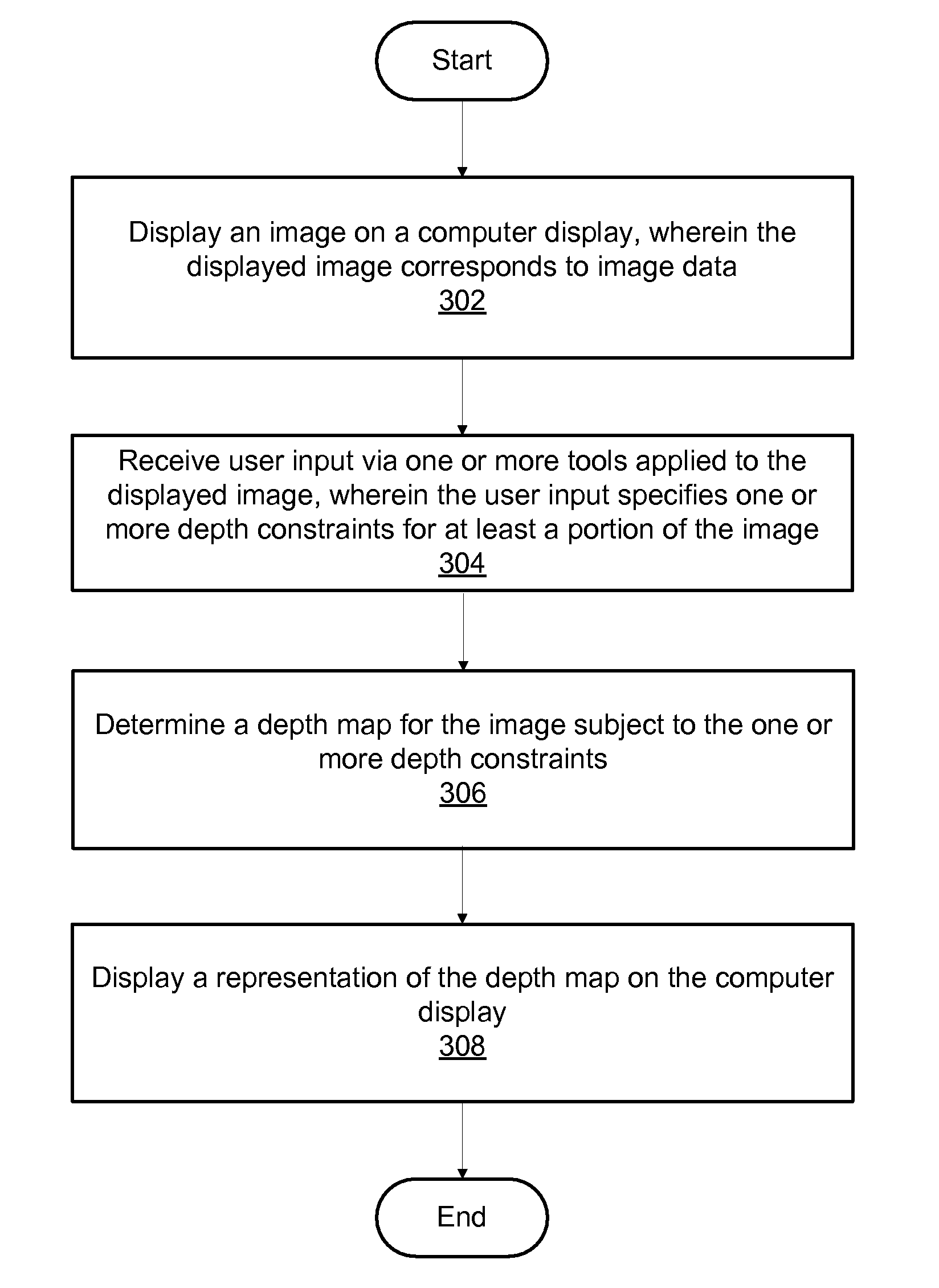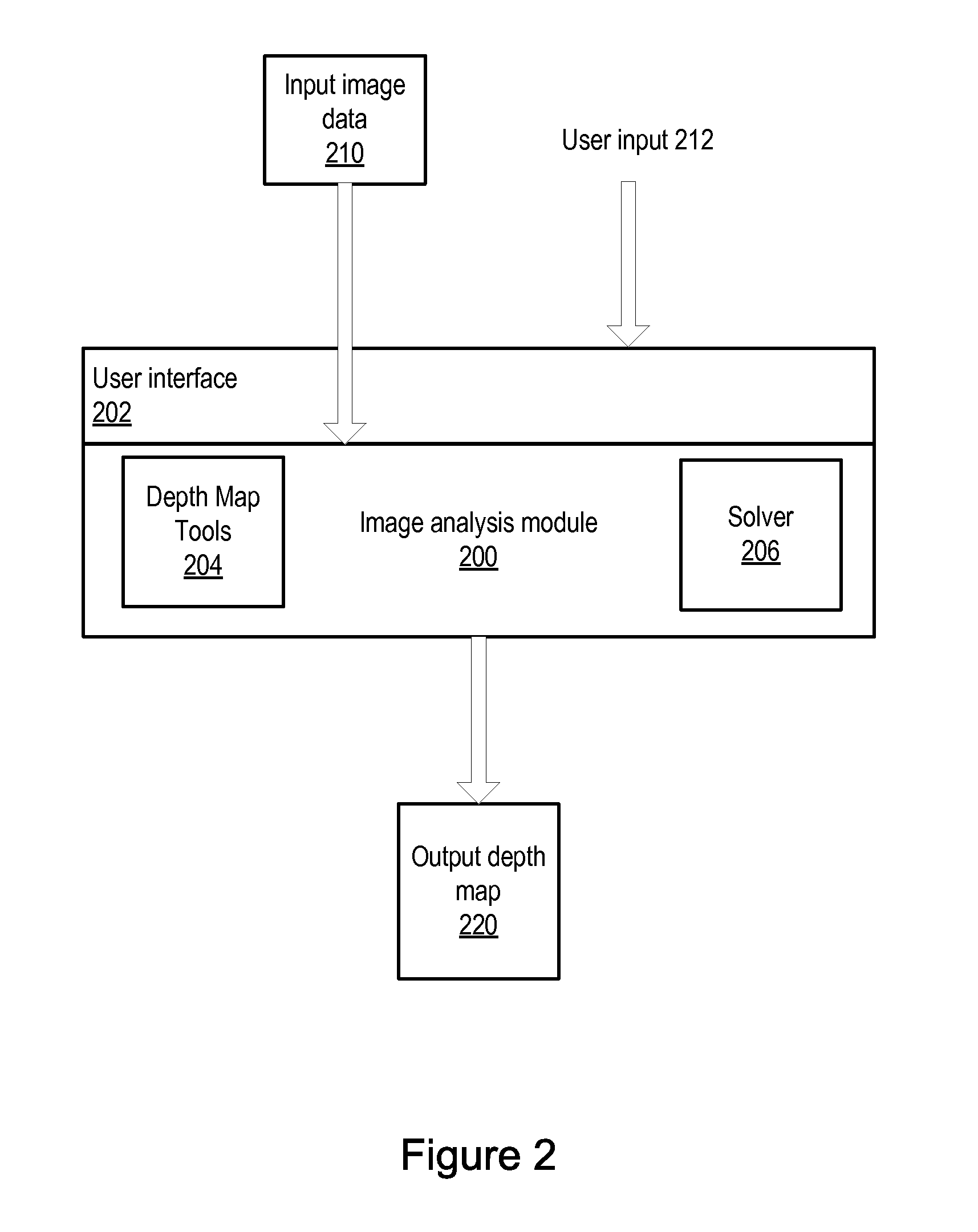Generating a Depth Map Based on a Single Image
a single image and depth map technology, applied in the field of digital image processing, can solve the problems of difficult to achieve the effect of generating a single image, requiring special hardware, and severely restricting the creation of depth maps,
- Summary
- Abstract
- Description
- Claims
- Application Information
AI Technical Summary
Benefits of technology
Problems solved by technology
Method used
Image
Examples
examples
[0070]FIGS. 4-10 illustrate exemplary screenshots demonstrating various aspects of the present invention, according to one embodiment. Note that the figures and the effects illustrates are intended to be exemplary only, and are not intended to limit the types of images, tools, effects, or GUI to any particular form, function, or appearance.
[0071]FIG. 4 illustrates an exemplary graphical user interface (GUI) displaying an initial image, in this case, a man's face. As may be seen, in this embodiment of the GUI, various depth map tools may be invoked via a tool selection portion of the GUI, seen to the right of the displayed face. Note that in this embodiment, the tools include depth, edge, hill, valley, blur, detail, and scissors tools (e.g., image brushes), described above, although it should be noted that other tools may be implemented as desired. As also shown, this GUI also include a tool configuration section (bottom right) that includes various controls for configuring parameter...
PUM
 Login to View More
Login to View More Abstract
Description
Claims
Application Information
 Login to View More
Login to View More - R&D
- Intellectual Property
- Life Sciences
- Materials
- Tech Scout
- Unparalleled Data Quality
- Higher Quality Content
- 60% Fewer Hallucinations
Browse by: Latest US Patents, China's latest patents, Technical Efficacy Thesaurus, Application Domain, Technology Topic, Popular Technical Reports.
© 2025 PatSnap. All rights reserved.Legal|Privacy policy|Modern Slavery Act Transparency Statement|Sitemap|About US| Contact US: help@patsnap.com



